Sequencing a teenager’s DNA to solve a mysterious illness
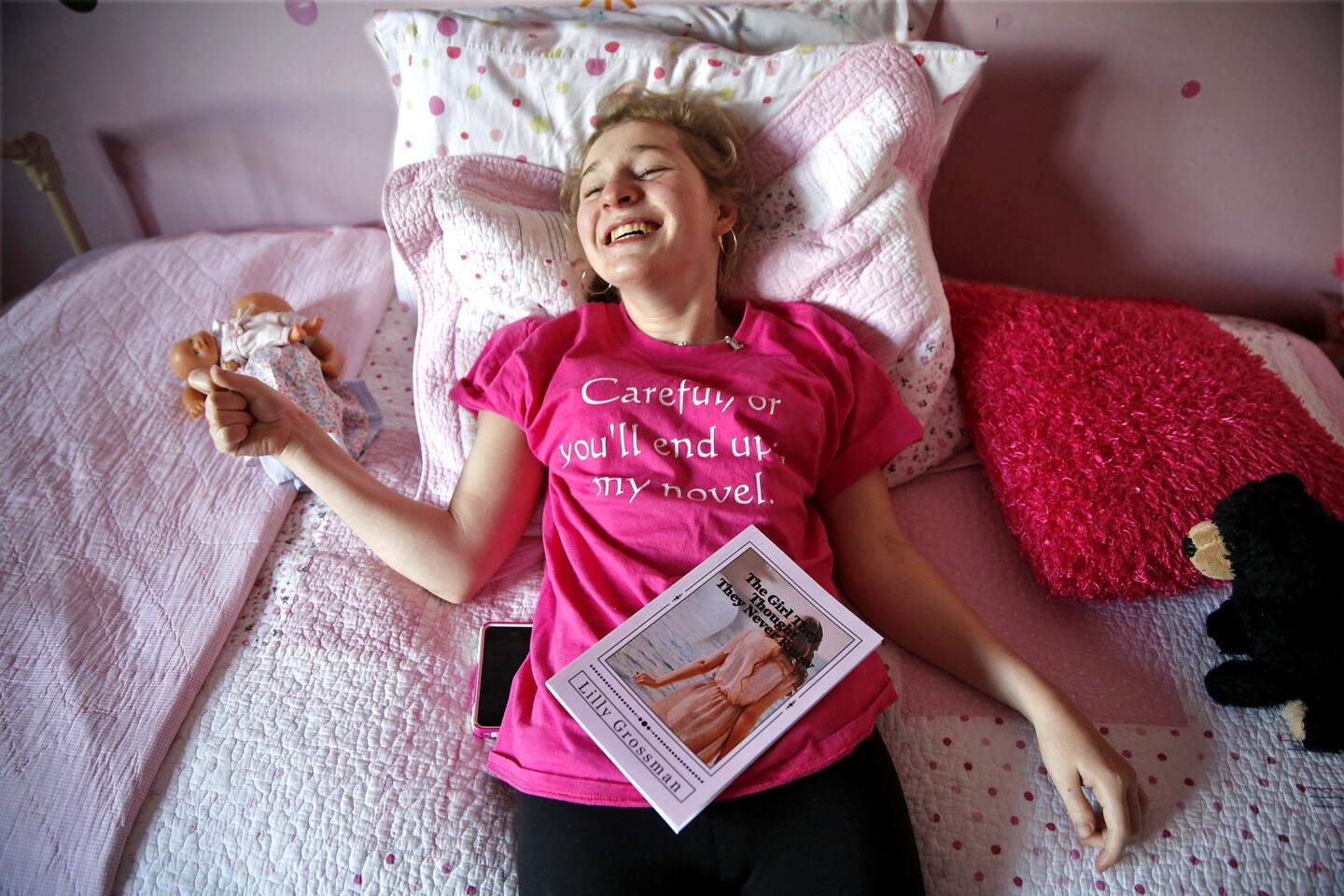
Surrounded by her favorite color, Lilly Grossman relaxes in her room at home in La Jolla. She has written and published a novel, “The Girl They Thought They Never Knew,” based on her lifelong disabilities. She’s too weak to stand, sit up or speak clearly and is plagued by nocturnal seizures. A genome scan revealed the reason behind her condition -- two mutated genes -- but not a solution. (Don Bartletti / Los Angeles Times)
Sixteen-year-old Lilly Grossman has been mysteriously disabled since birth, with trouble eating, walking, talking and sleeping. When scientists scanned her DNA and found two mutations, they thought they might be able to turn her life around. It hasn’t been that simple.
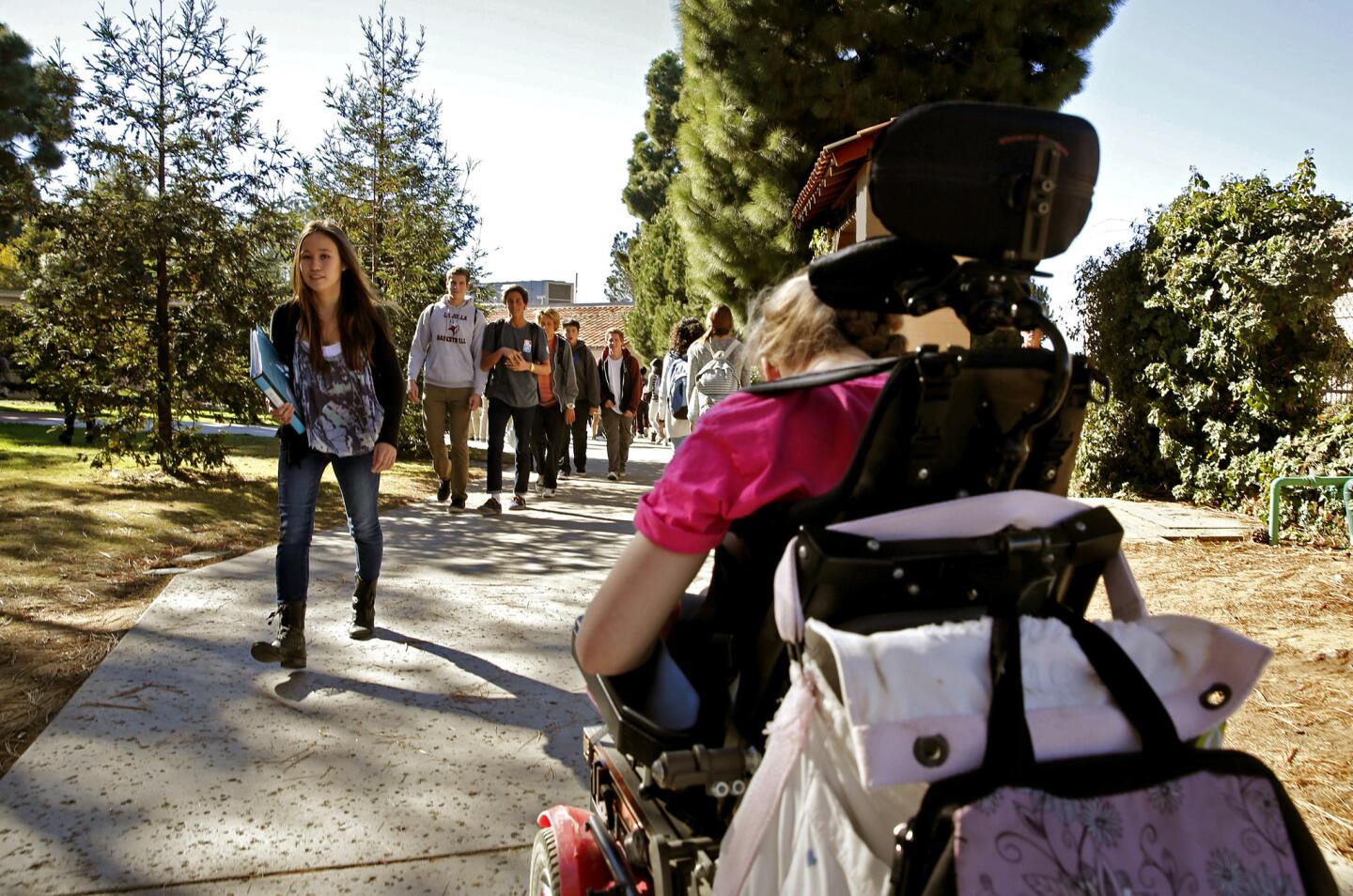
Lilly moves between classes in her power wheelchair. The La Jolla High School junior was voted homecoming princess by her class. (Don Bartletti / Los Angeles Times)
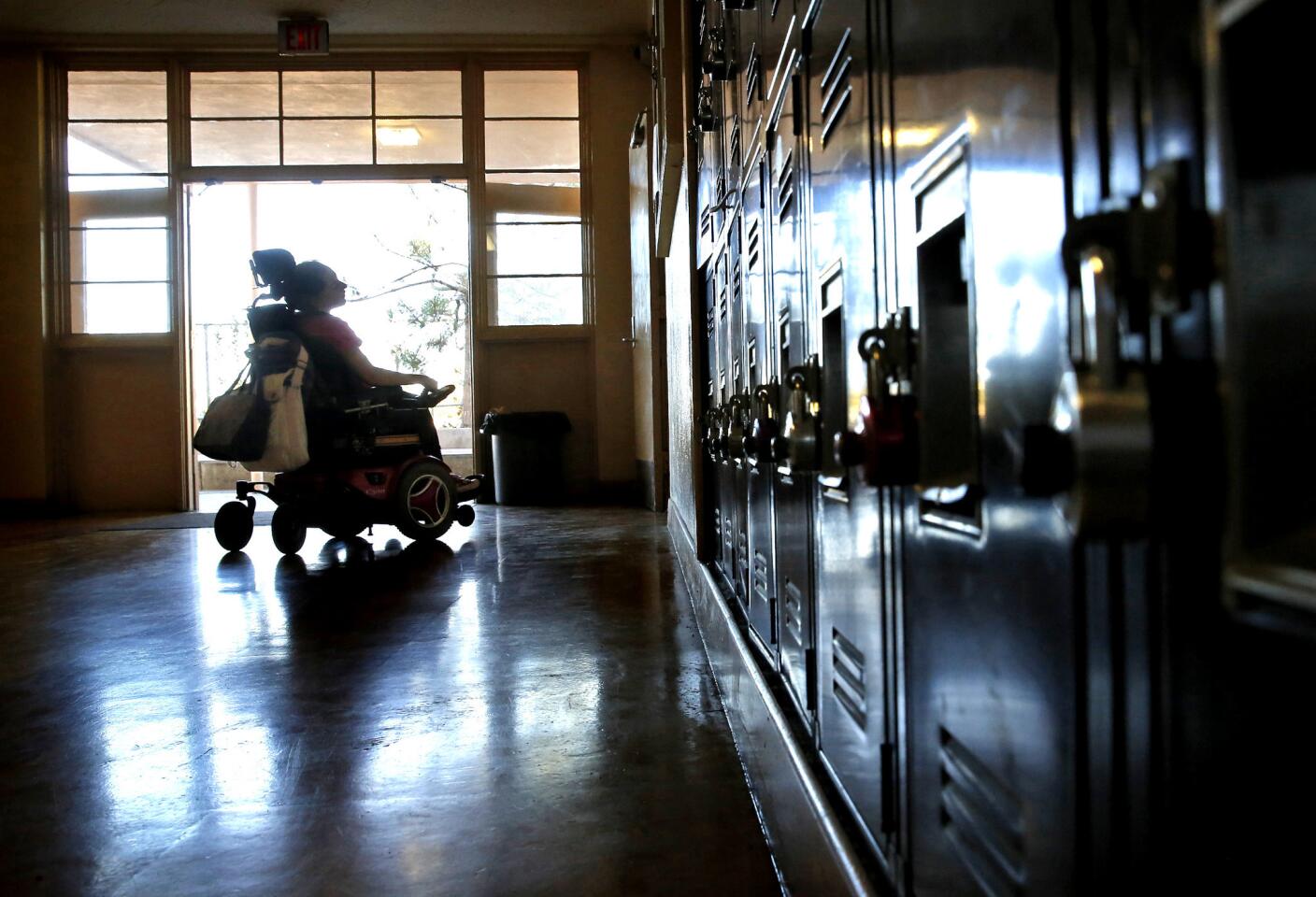
Lilly goes to journalism class, where she is a copy editor for the school newspaper. (Don Bartletti / Los Angeles Times)
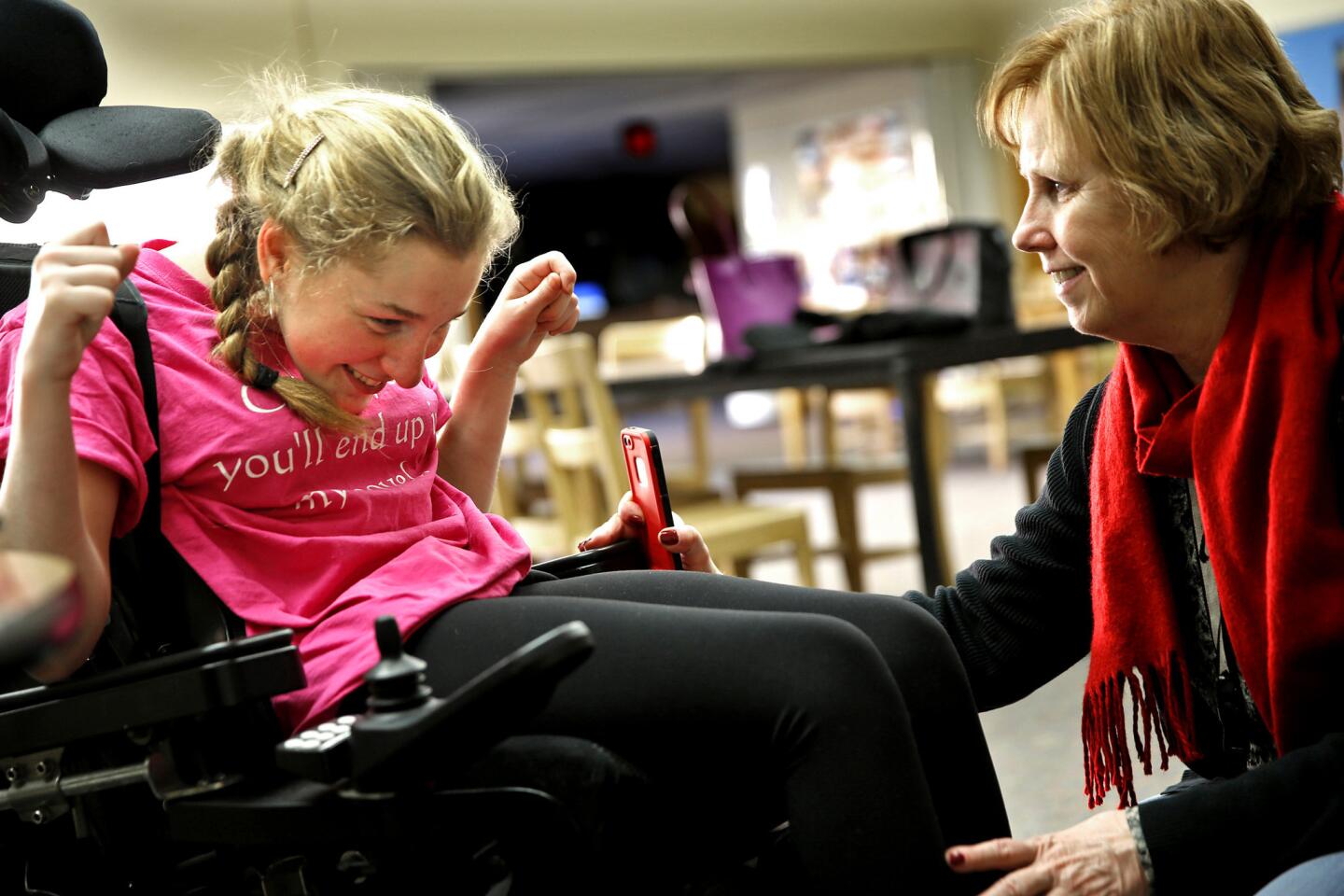
Lilly reacts to a pep talk from her La Jolla High case manager, Christine Johnson. (Don Bartletti / Los Angeles Times)
Advertisement
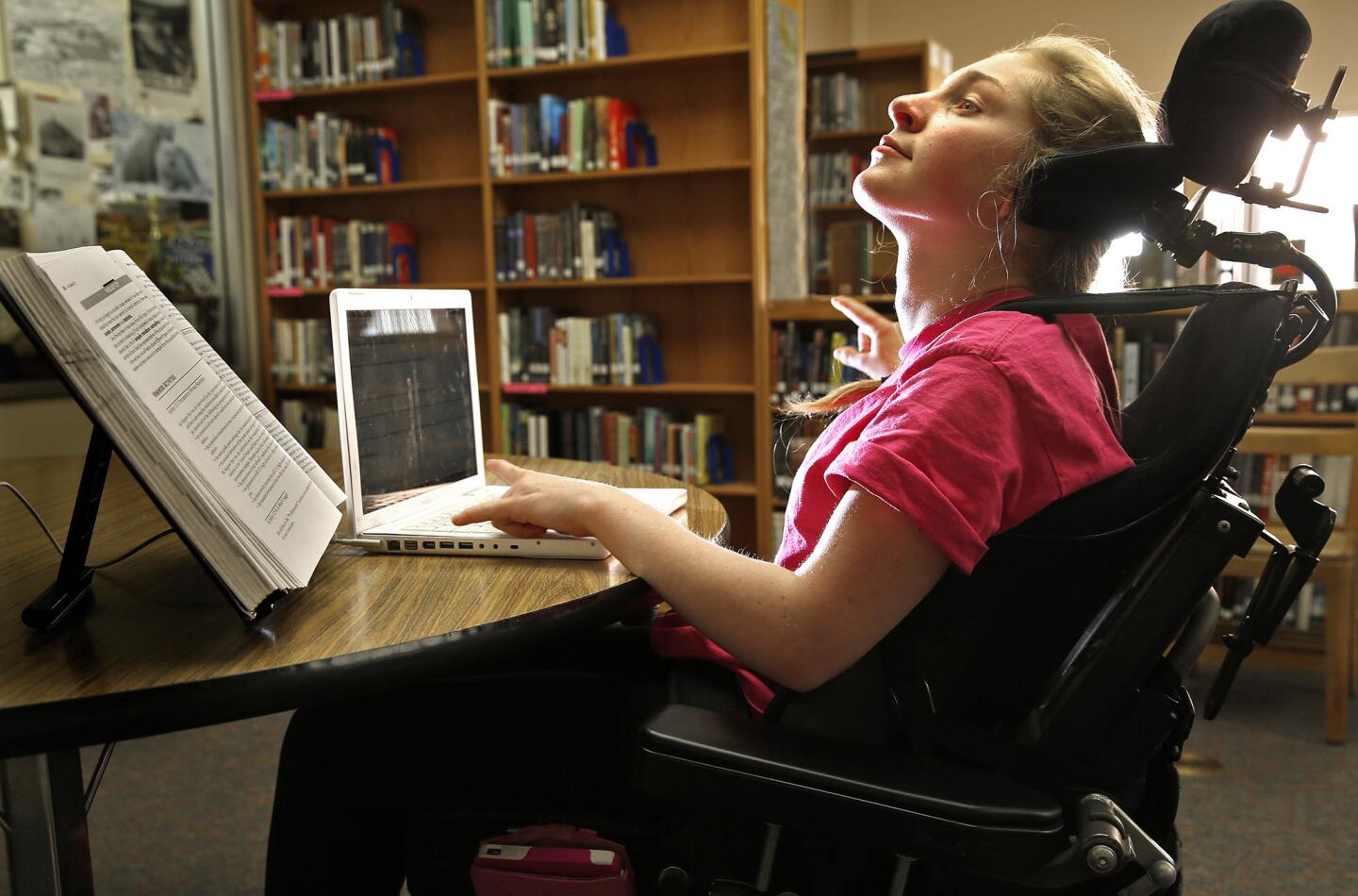
Lilly leans back for a few moments during study hall at the La Jolla High library. She has difficulty keeping her head upright for more than a few moments or speaking more than a few breathless words at a time. Her keyboard and smartphone have become her voice, enabling her to compose manuscripts and communicate with teachers and friends. (Don Bartletti / Los Angeles Times)

Lilly studies text on her computer in journalism class. (Don Bartletti / Los Angeles Times)
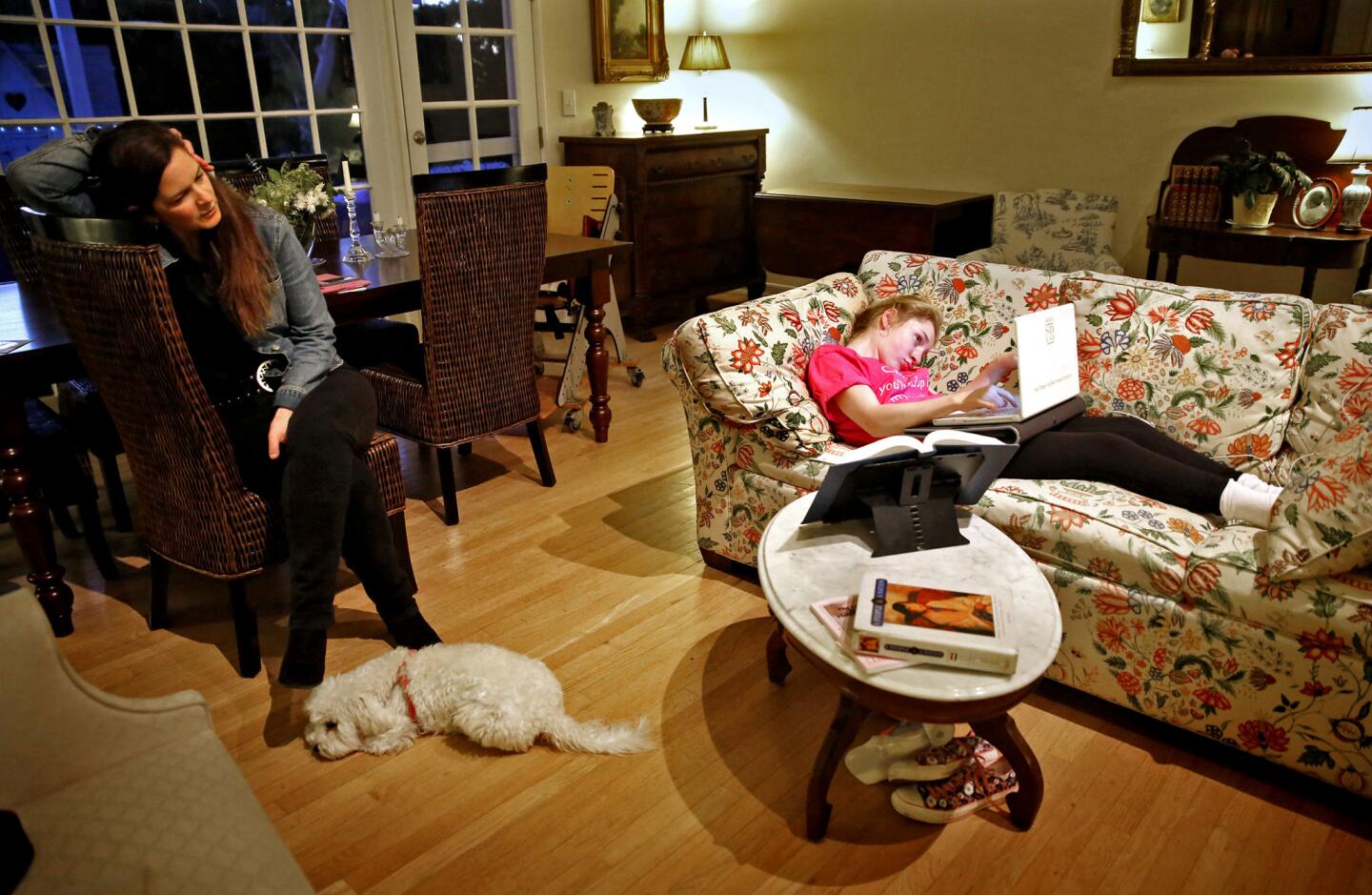
With her mother, Gay Grossman, looking on, Lilly does homework in the living room of their La Jolla home. Reclining is Lilly’s preferred study position because she is too weak to keep her head upright for very long. (Don Bartletti / Los Angeles Times)
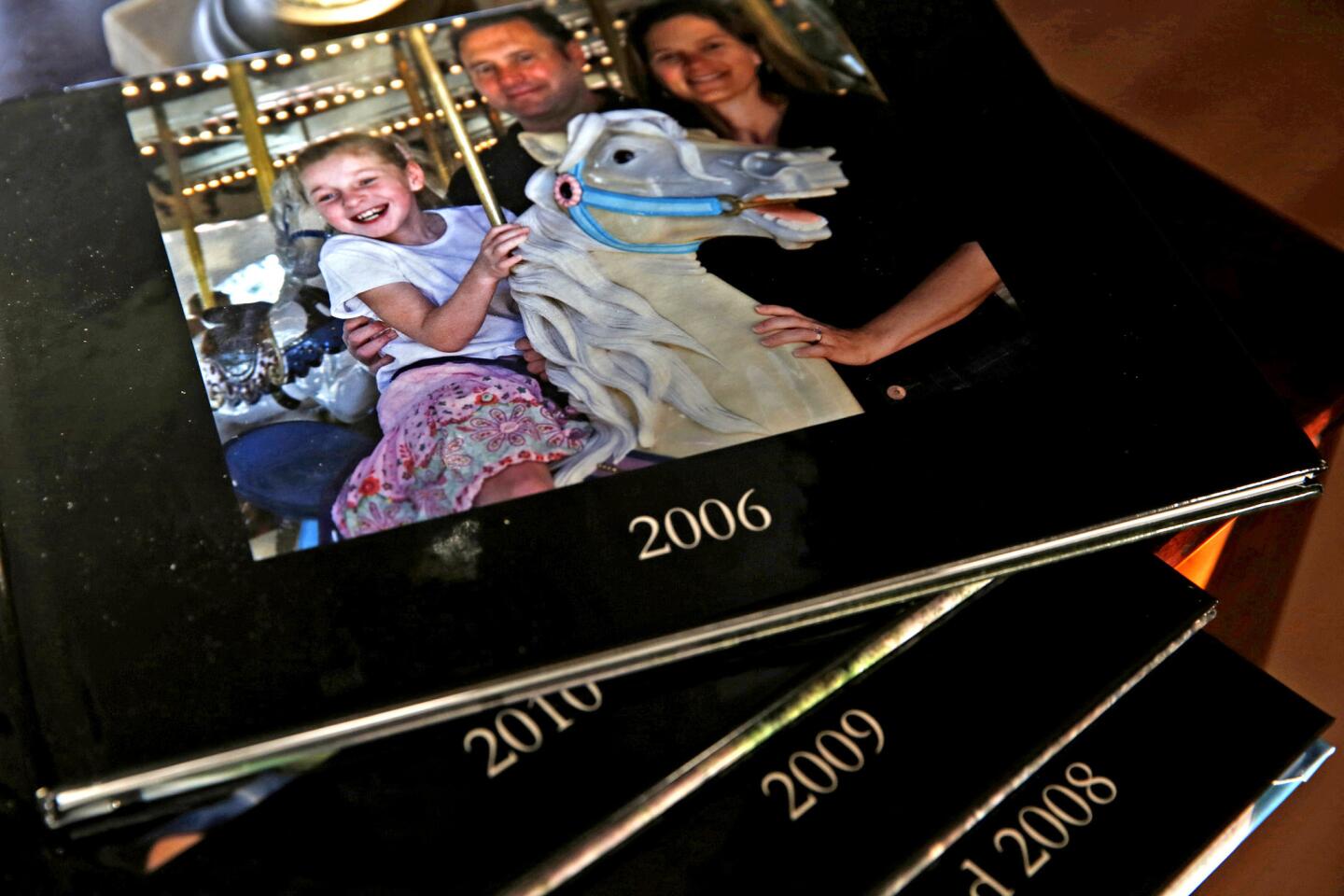
Family photo books with Lilly and her parents, Steve and Gay, lie on a table in the Grossman home. As the years have passed, Lilly has lost more control of her muscles, and she’s now unable to keep her head up for very long or walk on her own. (Don Bartletti / Los Angeles Times)
Advertisement
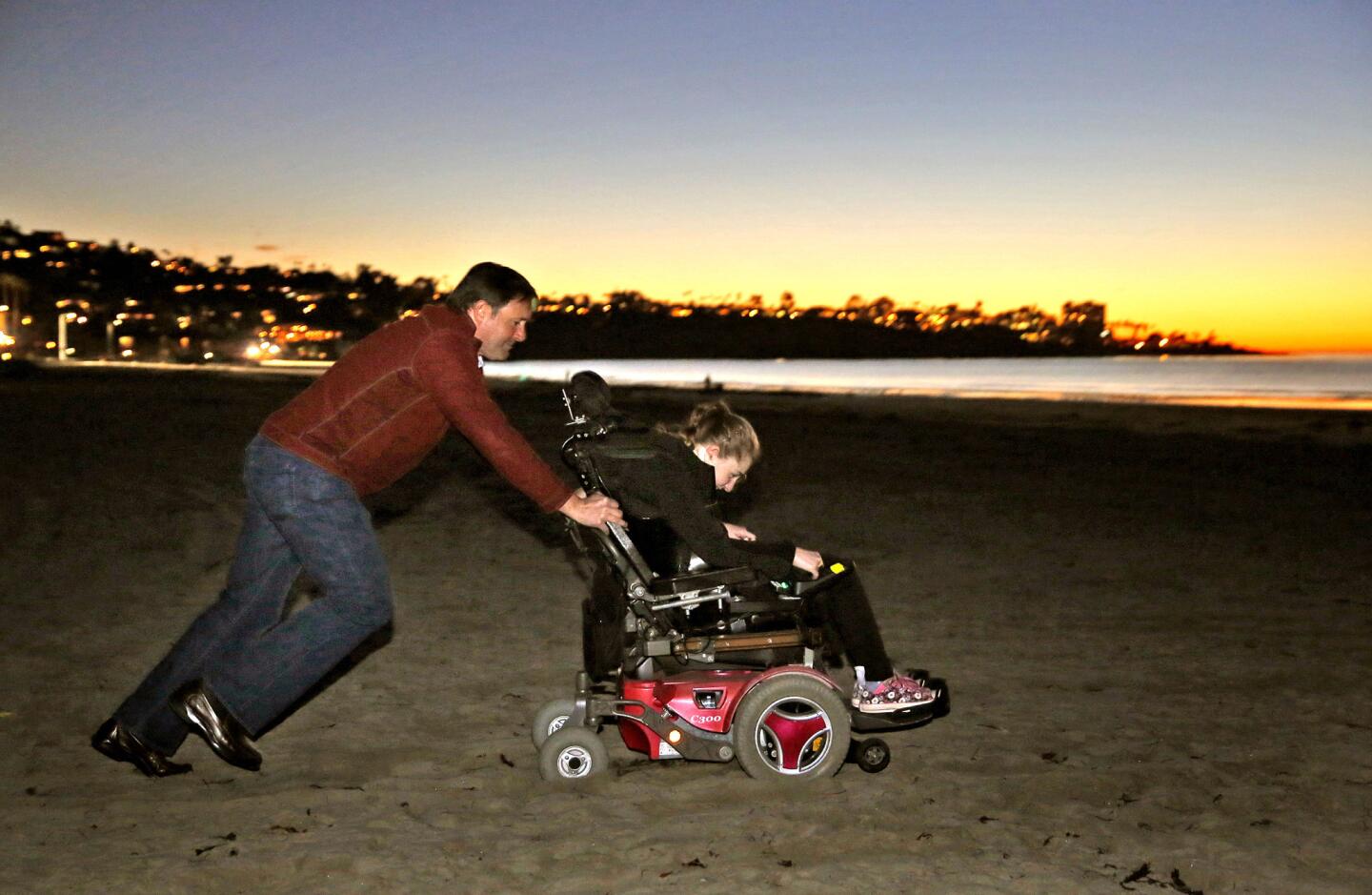
Steve Grossman pushes Lilly across the sand for a sunset visit at one of the family’s favorite spots, La Jolla Shores beach. They moved to San Diego from Ohio seven years ago to escape cold Midwestern weather that caused pain for Lilly. The move also put them closer to cutting-edge researchers at nearby Scripps Institute, where her unusual condition is being studied. (Don Bartletti / Los Angeles Times)

On a balmy winter evening, Lilly enjoys a sunset outing with her parents, Gay and Steve Grossman. (Don Bartletti / Los Angeles Times)
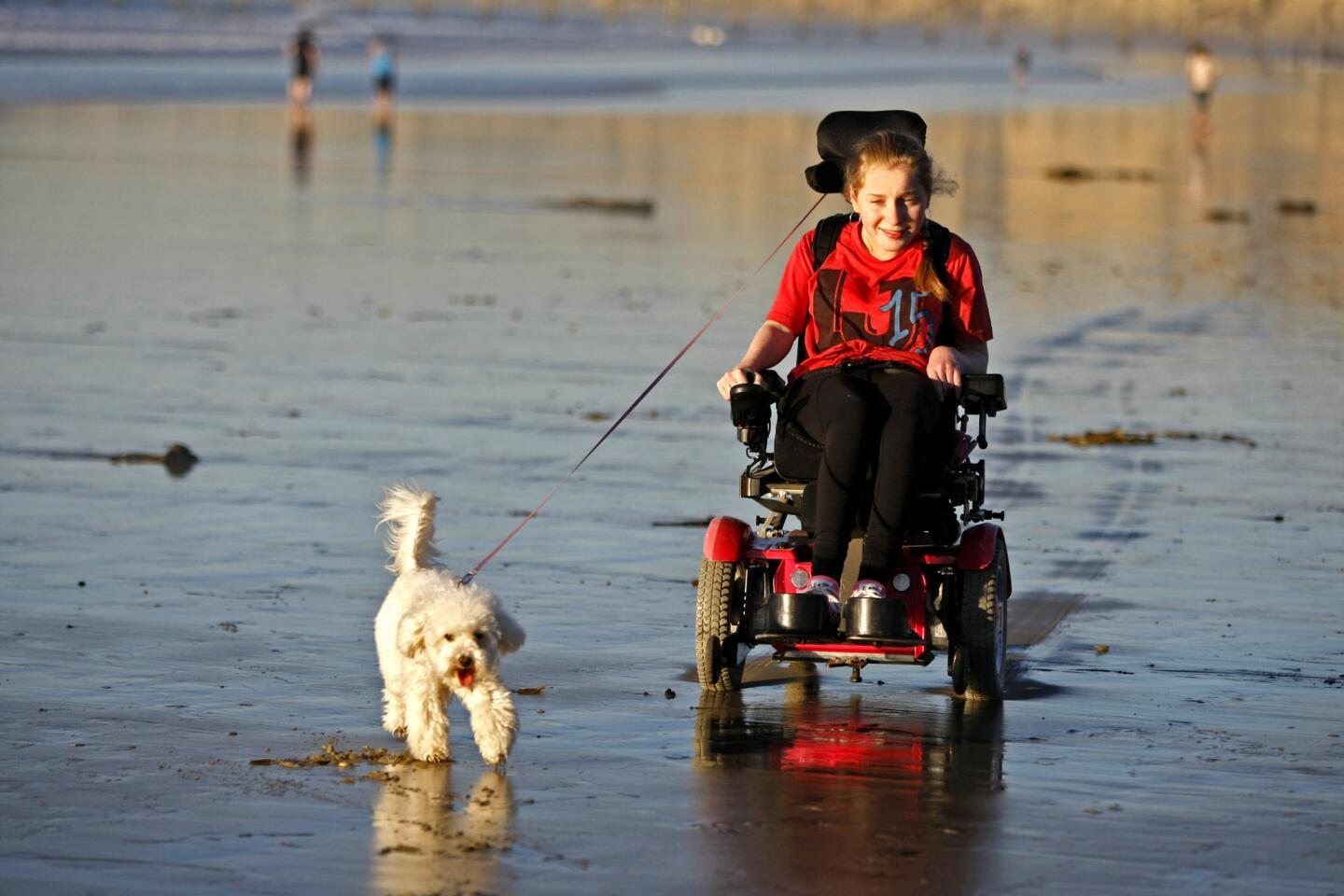
Lilly, wearing her La Jolla High school colors, zips along the beach at La Jolla Shores with her pet dog. A few miles up the beach is where scientists at Scripps Hospital analyzed her genome and found two mutated genes that have made it all but impossible for the teenager to walk on her own or talk clearly. (Don Bartletti / Los Angeles Times)
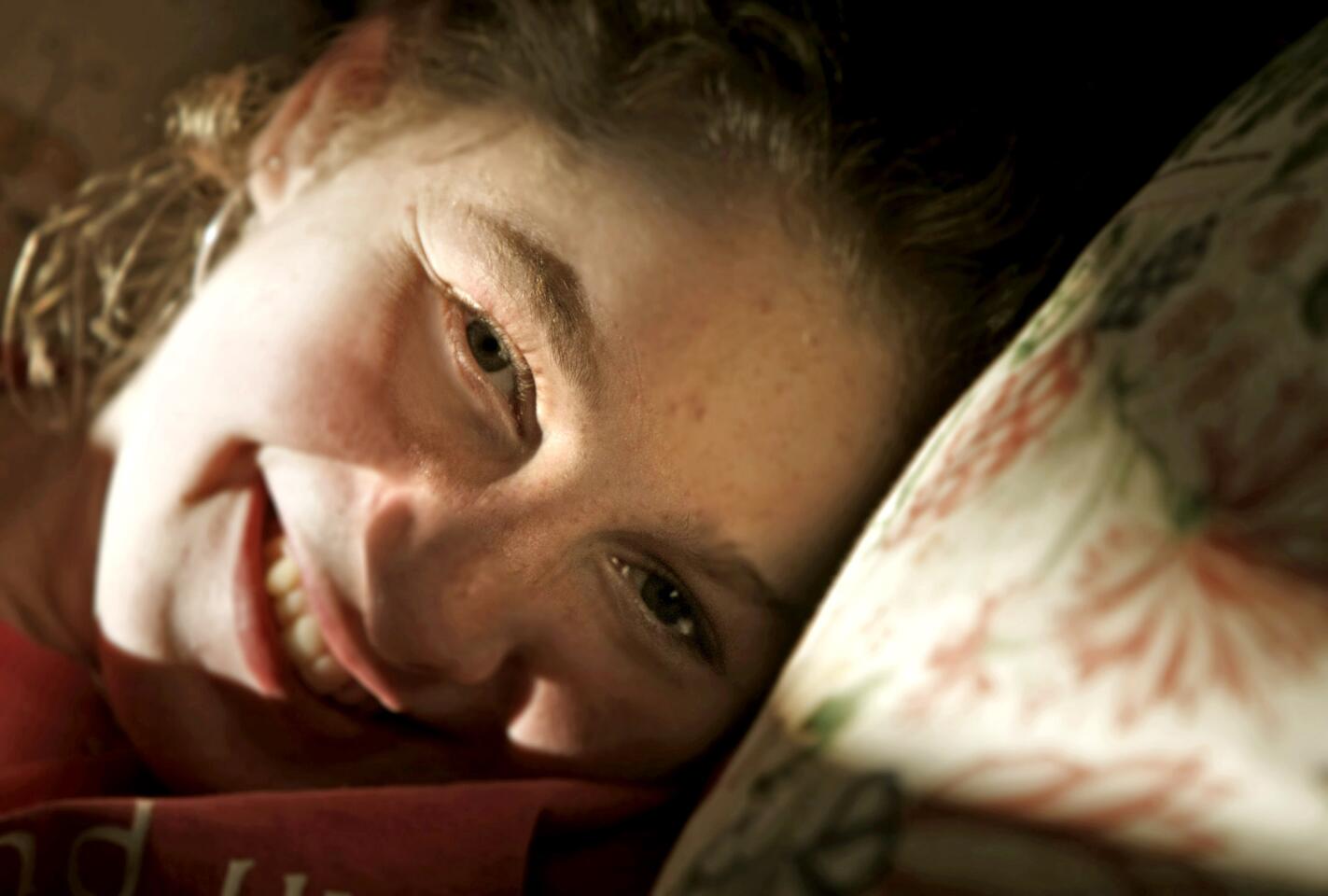
Lilly enjoys the sunshine on her face at home in La Jolla. (Don Bartletti / Los Angeles Times)







